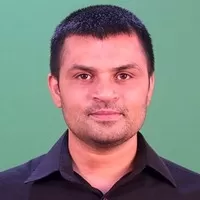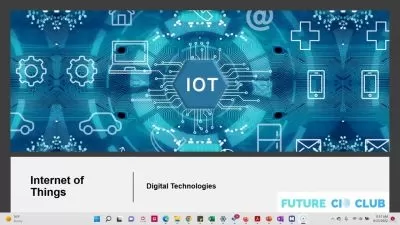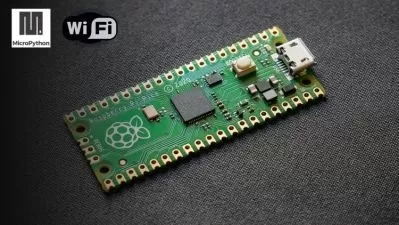IoT Tech Innovators: Embedded Systems for a Smarter Future
Salim Khan
3:05:29
Description
IoT and Embedded Systems
What You'll Learn?
- The course aims to provide exposure to the applications of IoT in smart cities and industrial applications
- It aims to train the students to the basic concepts of the Embedded C.
- It aims to train the students to the basic concepts of the Controller.
- This course is designed to give the students hands-on experience with the Software and Hardware concepts.
Who is this for?
What You Need to Know?
More details
DescriptionThis course provides a comprehensive introduction to the concepts and applications of Internet of Things (IoT) and Embedded Systems. Participants will explore the fundamental principles of embedded systems design, IoT architecture, and the integration of hardware and software to create intelligent devices.
Course Outcome: After completion of the course, the student will be able to
Understand the basic concepts of sensors and transducers.
Understand basics of embedded system and different IoT boards.
Apply basic operations and programming techniques of IoT devices.
Apply smart technology knowledge through case studies.
List of Experiments (Indicative & not limited to)
1. Understanding the Architecture and Pin Configuration of ESP8266 and Arduino Boards.
2. Hands-On Introduction to commonly used real world IoT Sensors.
3. Analyze Digital signal data acquisition using Arduino and ESP8266.
4. Explore Digital signal generation using Arduino and ESP8266.
5. Analyze Analog signal data acquisition using Arduino.
6. Explore Analog signal generation using Arduino.
7. Real-Time Data Logging Using ESP8266 and Arduino.
8. Designing a Lighting Control System using LDR.
9. Designing a Multi-Sensor Alert System Using Touch, IR, PIR and Arduino.
10. Object Detection Using Ultrasonic Sensors with Arduino and ESP.
Beyond Syllabus:
11. Real-Time Data Logging Using ThingSpeak with Arduino.
12. Building IoT Applications with Blynk: Monitoring Temperature and Humidity with DHT11 Sensor.
13. Building IoT Applications with Blynk: Smart Home Automation Using ESP8266 and Blynk.
14. Building a Soil Health Monitoring system using NPK sensor.
15. Designing Water Quality Monitoring System.
Who this course is for:
- Engineering students specializing in electronics, computer science, or related fields.
- Makers and hobbyists passionate about building IoT devices.
- Researchers and academics focused on IoT applications.
This course provides a comprehensive introduction to the concepts and applications of Internet of Things (IoT) and Embedded Systems. Participants will explore the fundamental principles of embedded systems design, IoT architecture, and the integration of hardware and software to create intelligent devices.
Course Outcome: After completion of the course, the student will be able to
Understand the basic concepts of sensors and transducers.
Understand basics of embedded system and different IoT boards.
Apply basic operations and programming techniques of IoT devices.
Apply smart technology knowledge through case studies.
List of Experiments (Indicative & not limited to)
1. Understanding the Architecture and Pin Configuration of ESP8266 and Arduino Boards.
2. Hands-On Introduction to commonly used real world IoT Sensors.
3. Analyze Digital signal data acquisition using Arduino and ESP8266.
4. Explore Digital signal generation using Arduino and ESP8266.
5. Analyze Analog signal data acquisition using Arduino.
6. Explore Analog signal generation using Arduino.
7. Real-Time Data Logging Using ESP8266 and Arduino.
8. Designing a Lighting Control System using LDR.
9. Designing a Multi-Sensor Alert System Using Touch, IR, PIR and Arduino.
10. Object Detection Using Ultrasonic Sensors with Arduino and ESP.
Beyond Syllabus:
11. Real-Time Data Logging Using ThingSpeak with Arduino.
12. Building IoT Applications with Blynk: Monitoring Temperature and Humidity with DHT11 Sensor.
13. Building IoT Applications with Blynk: Smart Home Automation Using ESP8266 and Blynk.
14. Building a Soil Health Monitoring system using NPK sensor.
15. Designing Water Quality Monitoring System.
Who this course is for:
- Engineering students specializing in electronics, computer science, or related fields.
- Makers and hobbyists passionate about building IoT devices.
- Researchers and academics focused on IoT applications.
User Reviews
Rating
Salim Khan
Instructor's Courses
Udemy
View courses Udemy- language english
- Training sessions 24
- duration 3:05:29
- Release Date 2024/12/21










